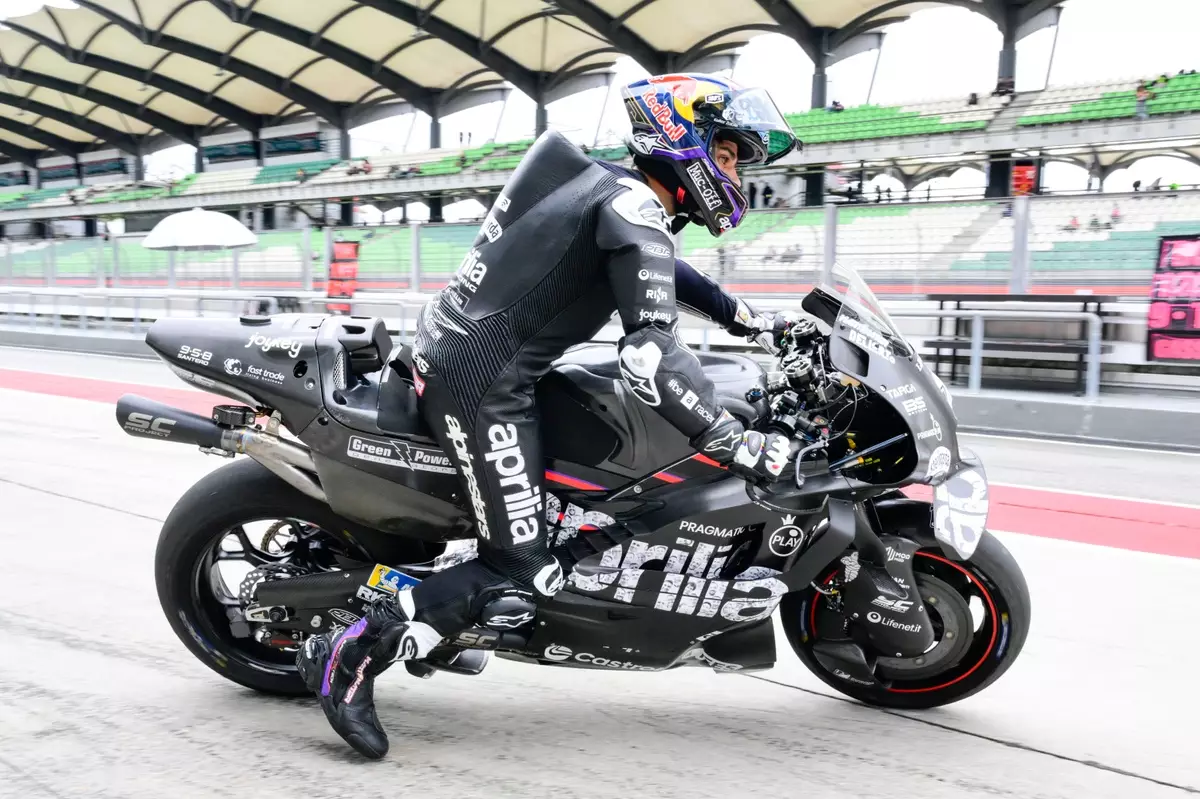The world of MotoGP is no stranger to high-stakes drama, but the recent incident involving reigning champion Jorge Martin during the Sepang pre-season testing has raised serious questions about safety protocols and manufacturer accountability. The crash—as a result of what Aprilia disputes was a drop in tyre temperature—highlights a concerning narrative surrounding both rider safety and the reliability of equipment used in the sport. Martin’s highside resulted in severe injuries, leading Aprilia to challenge Michelin’s findings and demand a deeper examination of the events surrounding the incident.
On the first day of testing in Malaysia, Martin experienced a catastrophic loss of control, landing awkwardly and suffering significant injuries. Michelin responded to the incident by suggesting that the tyre’s inner temperature was recorded at 15 degrees Celsius lower than the optimal range. This assertion placed the blame squarely on the conditions of the tyre, but Aprilia has failed to accept this explanation, suggesting that deeper-rooted issues may be at play.
Massimo Rivola, Aprilia’s motorsport director, did not mince words when addressing Michelin’s reasoning for Martin’s crash. He pointedly indicated that their data conflicts with the tyre manufacturer’s claims, arguing that both the bike and the rider were functioning as expected. Rivola’s skepticism is compounded by an insistence that the history of the tyre—specifically its storage duration—needs scrutiny. This insistence not only highlights a division in accountability but also reflects a creeping sense of mistrust between teams and tyre suppliers, something that could jeopardize the overall safety culture in MotoGP.
Rivola’s call for a consolidated meeting among teams—and particularly with Michelin—underscores the necessity for open dialogue in the face of injuries that plague riders. With mounting injuries being a frequent concern, the push for a collaborative approach resonates with safety advocates who have long called for a unified effort to enhance rider safety in motorcycle racing.
Jorge Martin’s Injuries and Aftermath
The repercussions of the crash extended beyond the immediate danger, with Martin enduring a serious hand injury and multiple fractures in his foot. Following the crash, he was promptly transported to a local hospital where he underwent surgery for a displaced fracture to his fifth metacarpal, performed by the esteemed Dr. Xavier Mir. Fortunately, Dr. Mir classified the operation as a success and indicated that Martin could commence functional rehabilitation shortly, but the entire ordeal raises questions about the broader implications of rider health and the potential for insufficient emergency protocols at testing facilities.
Both Martin and fellow rider Raul Fernandez have been provisionally listed for the upcoming Buriram test; however, Martin’s recovery will play a crucial role in whether he can actually participate. This uncertainty casts a shadow over future tests as factors like adequate recovery time and rider preparedness are paramount in ensuring performance while prioritizing safety.
As the MotoGP season draws near, the tension between Aprilia and Michelin serves as an urgent reminder of the need for improved safety measures in the sport. With each crash, the discussion around rider safety intensifies, but it often seems that these conversations dwindle until the next severe incident occurs. The discord between motorcycle teams and tyre suppliers highlights a gap that desperately needs bridging; otherwise, the risk to riders will continue to grow.
Moving forward, it is imperative that all stakeholders—including manufacturers, teams, and governing bodies—commit to revisiting safety protocols, tyre testing, and overall rider welfare. Bridging these gaps is not just about preventing future injuries but also about restoring confidence in the systems designed to protect athletes in one of the fastest and most dangerous sports in the world.
The incident involving Jorge Martin should serve as a catalyst for necessary changes within MotoGP, emphasizing that safety cannot be an afterthought but should be the core consideration guiding all aspects of this thrilling sport.


Leave a Reply